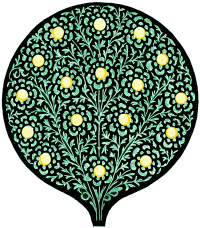Illustrated by a series of engravings; with descriptions in english by Octavian Dalvimart.
The text has been attributed to William Alexander, B. De Tott, J. Dallaway, G.A. Olivier, M. Montague, J. Pitton de Tournefort, Μ. d’Ohsson.
Printed for William Miller, Old Bond Street by Howlett and Brimmer, 10 Frith Street, Soho Square. MDCCCIV. Published in London, 1804.
The costume of Turkey. Ottoman Empire 1802.
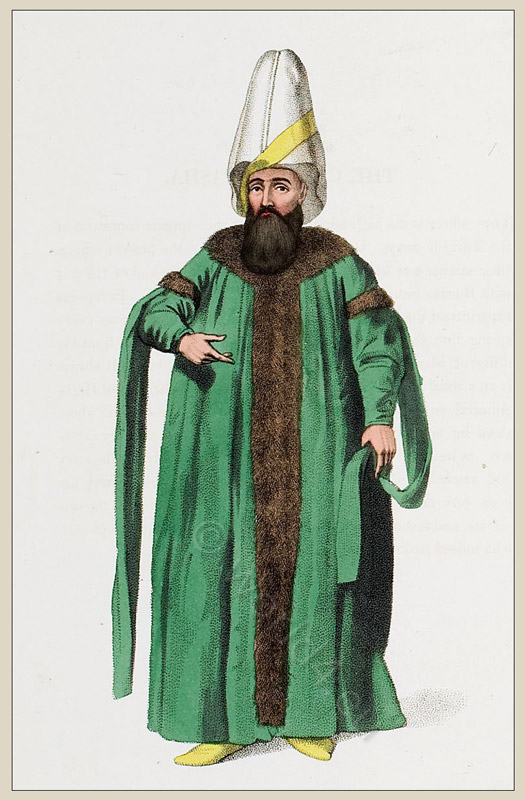
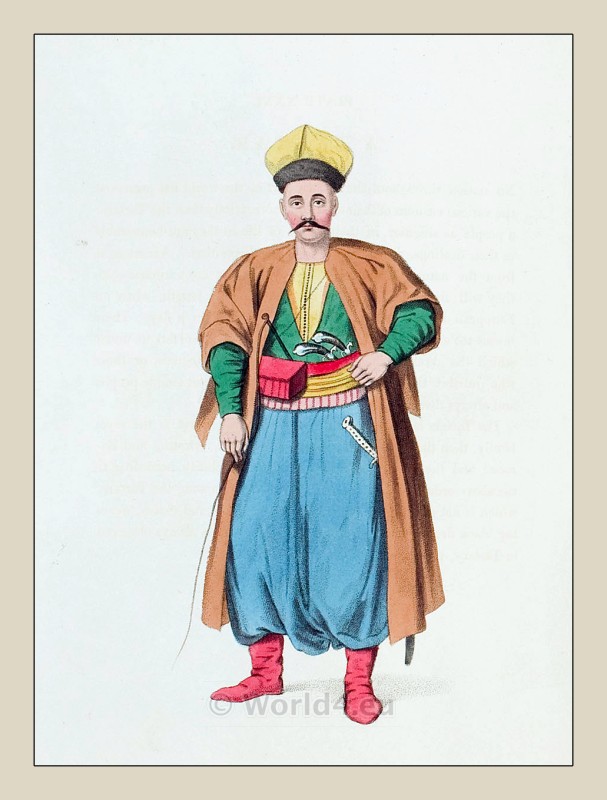
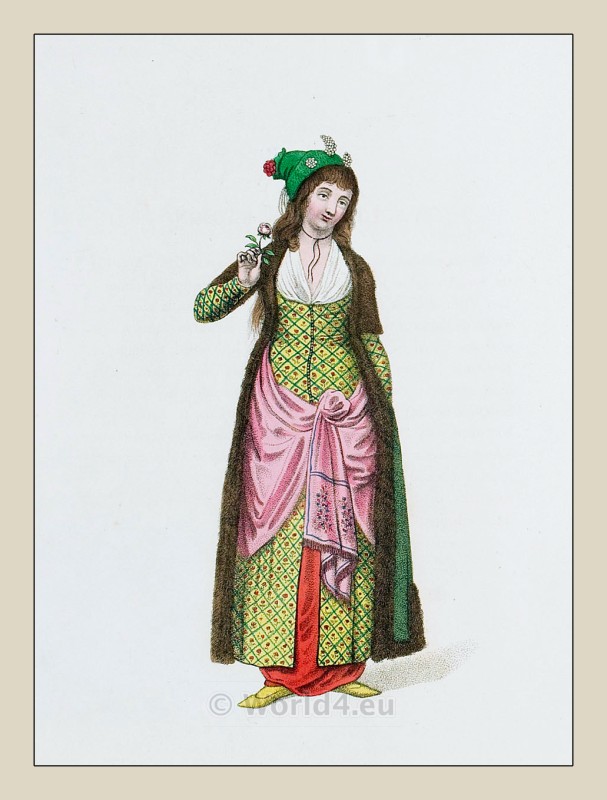
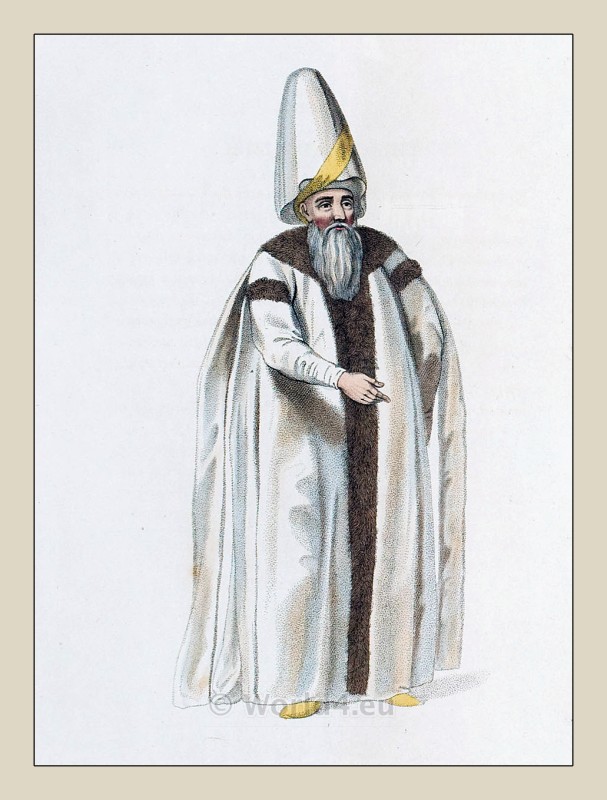
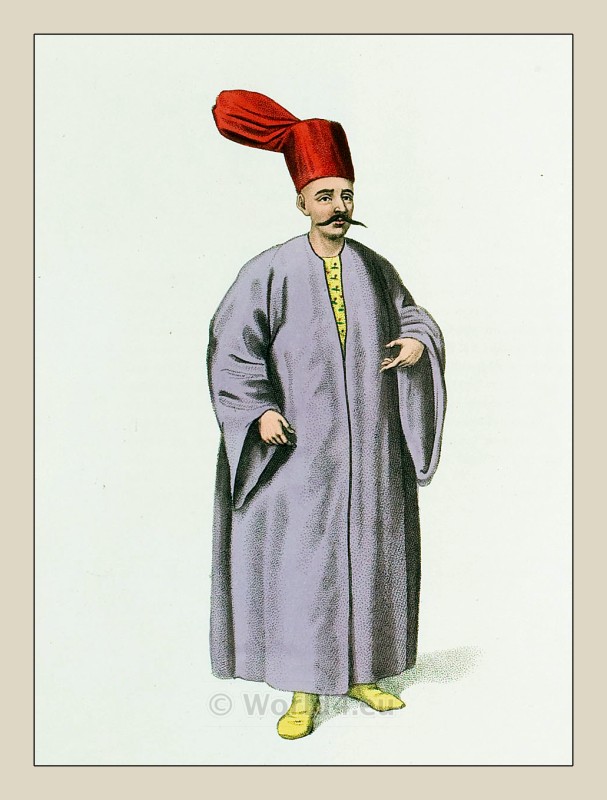

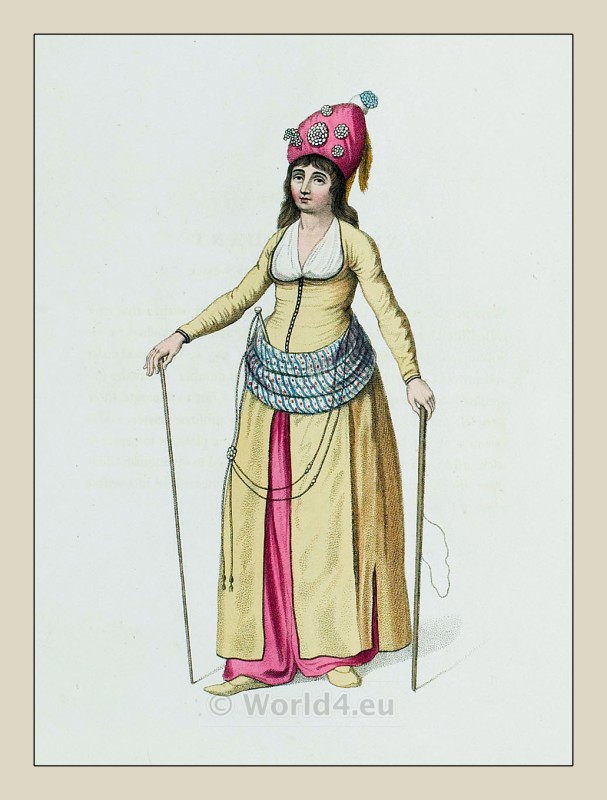
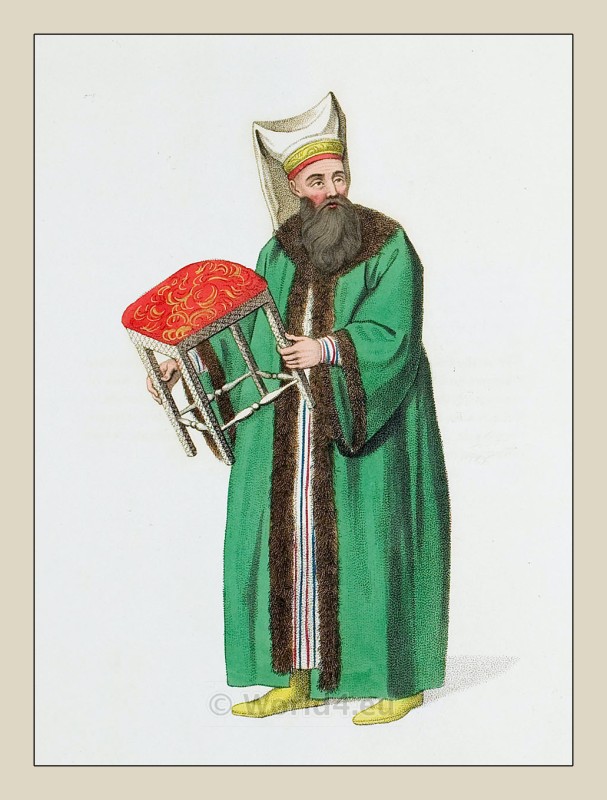
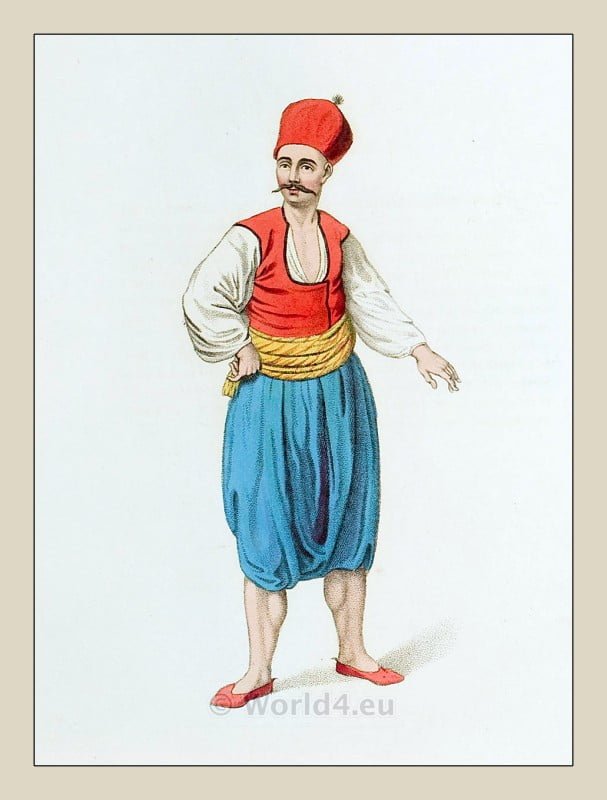

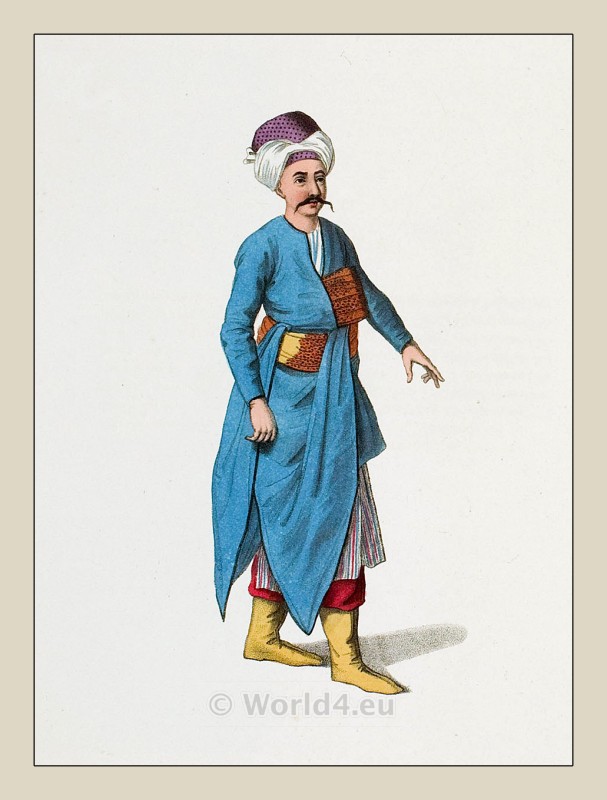
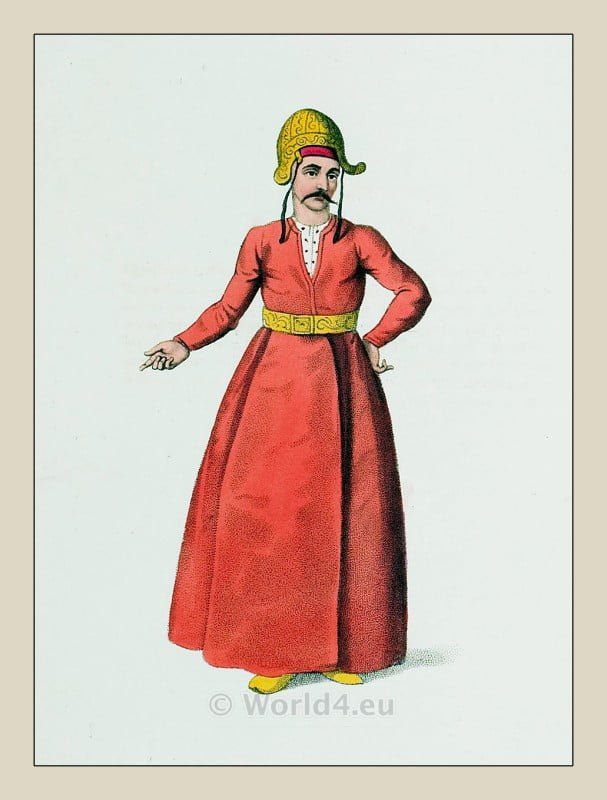
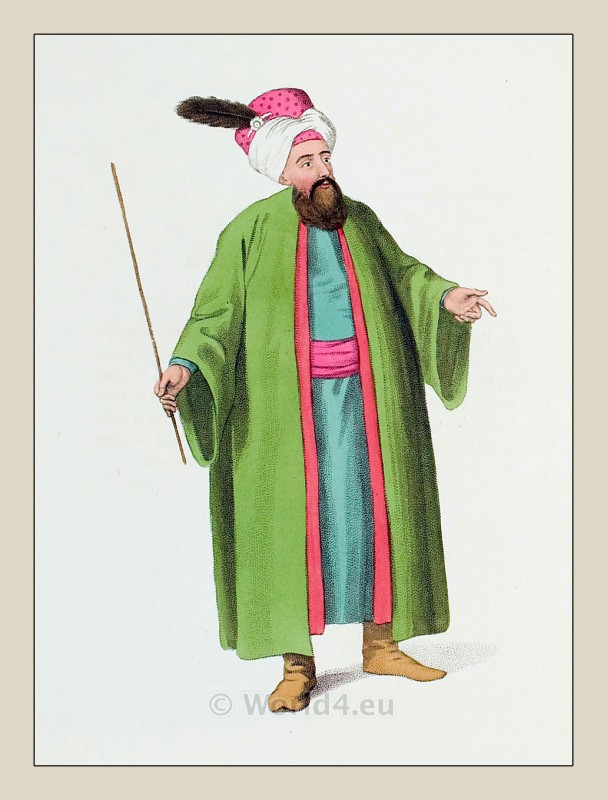
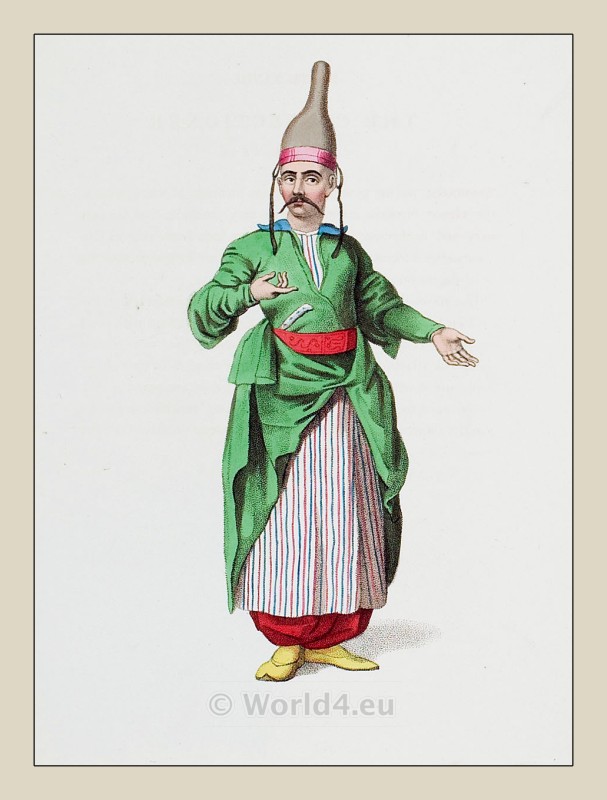
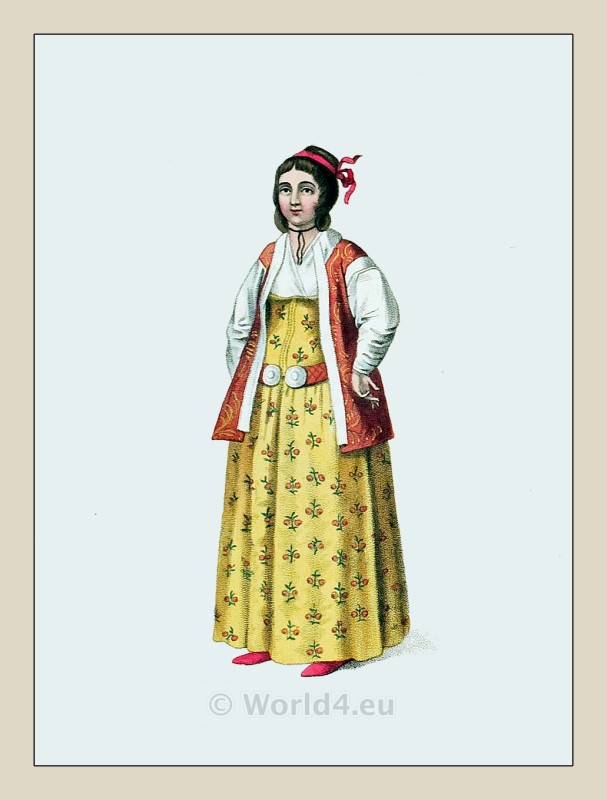
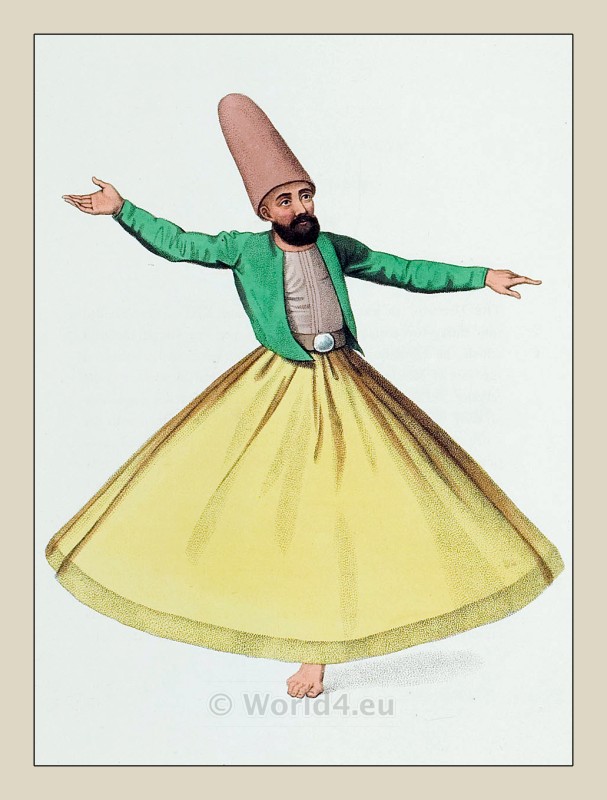
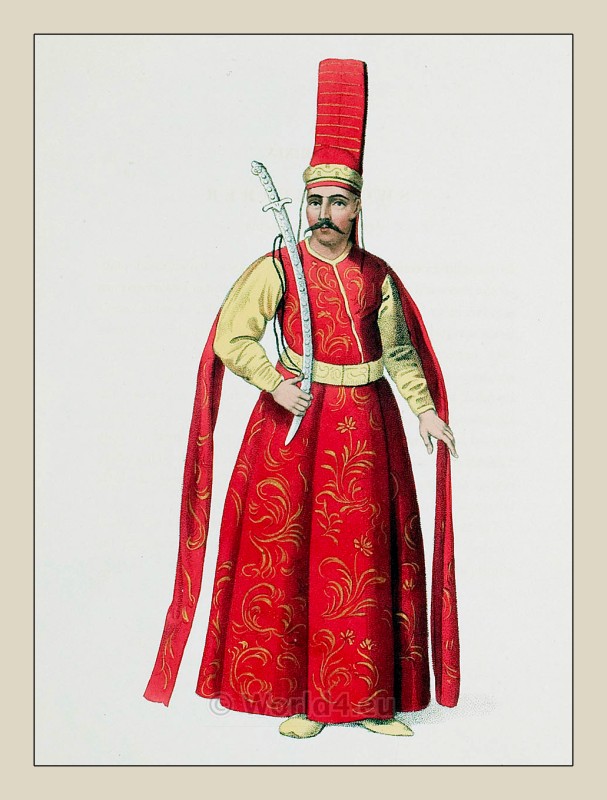
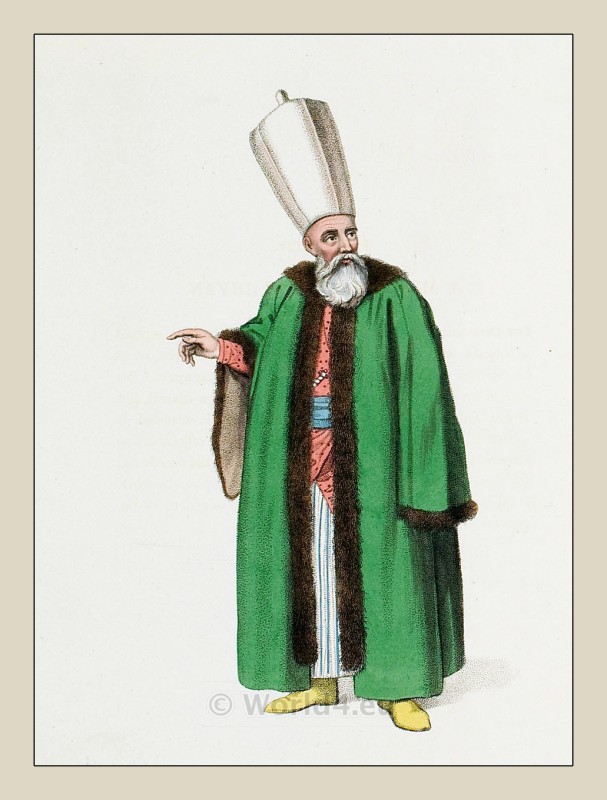
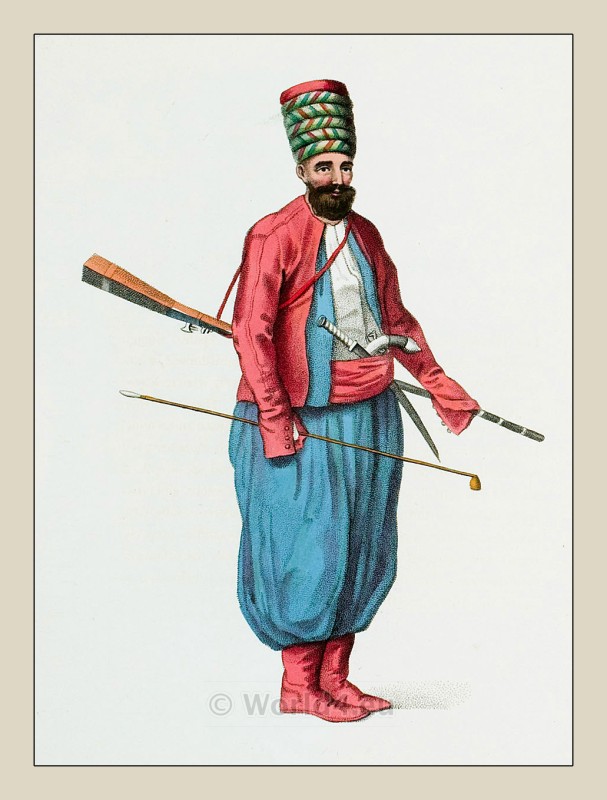
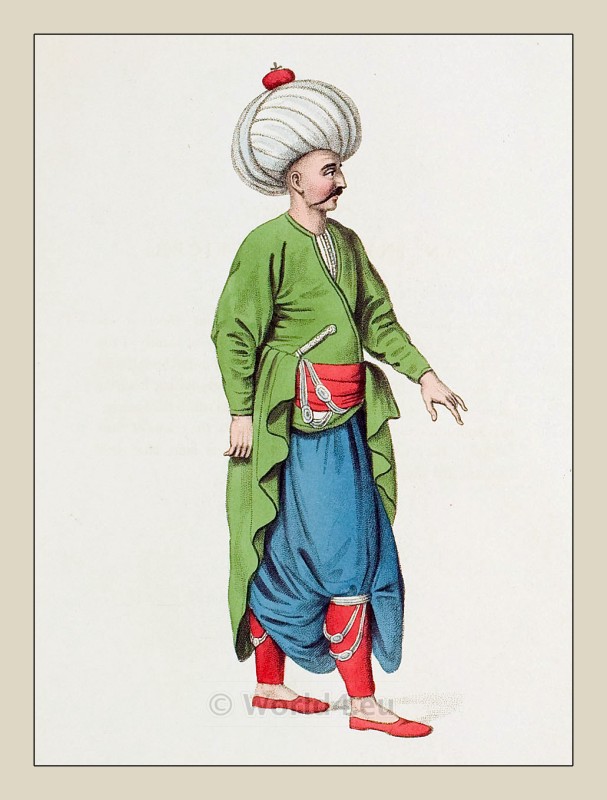

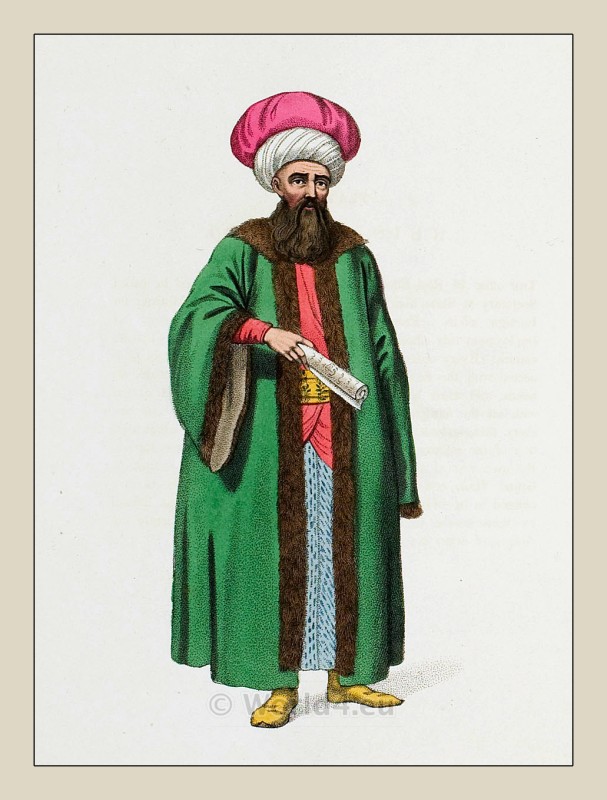
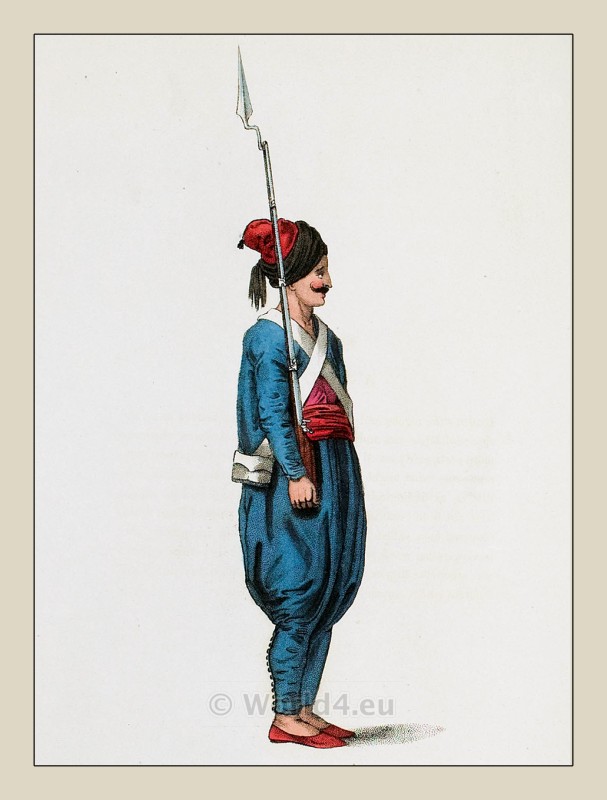
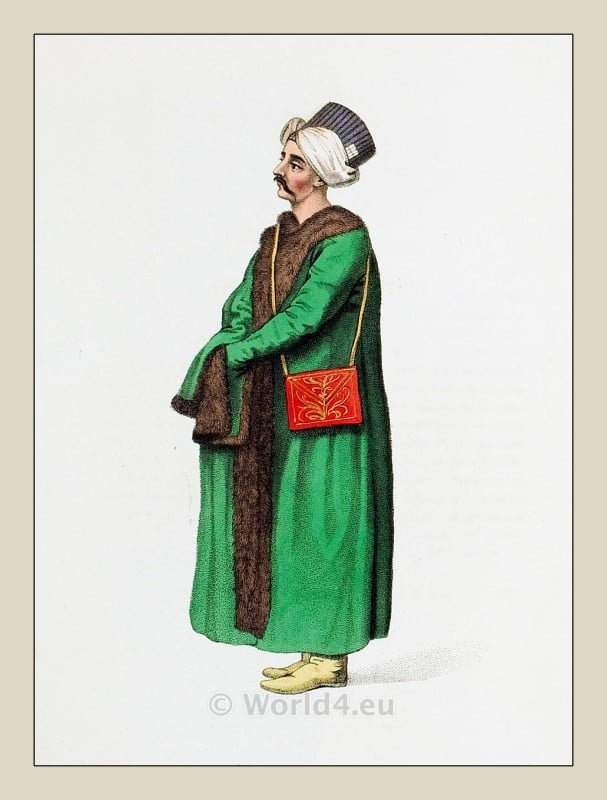
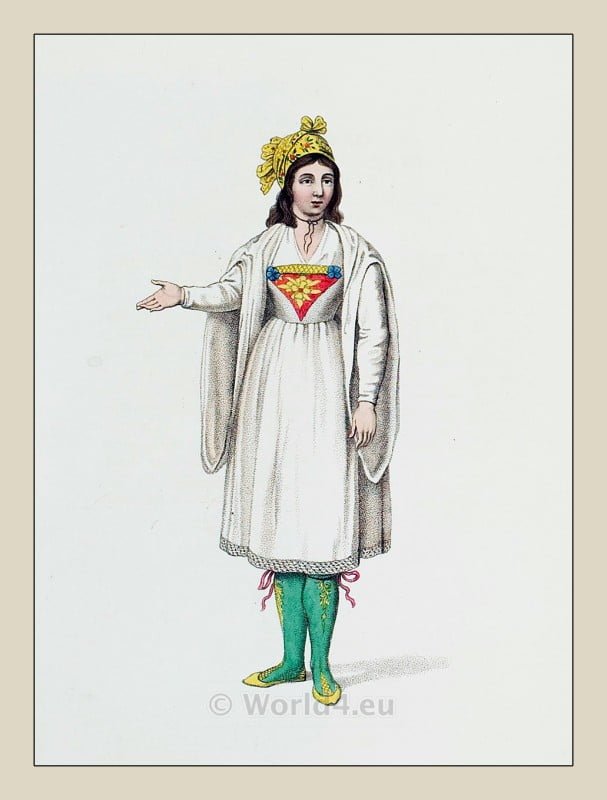

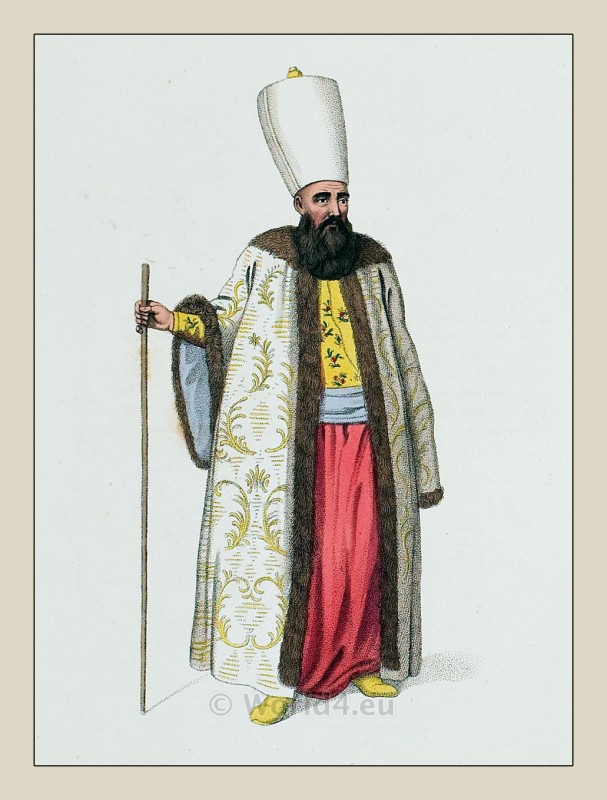


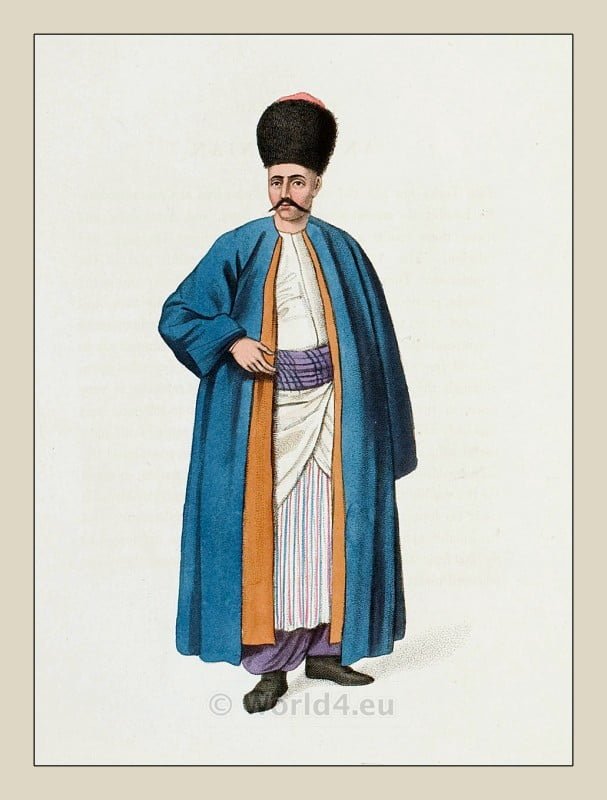
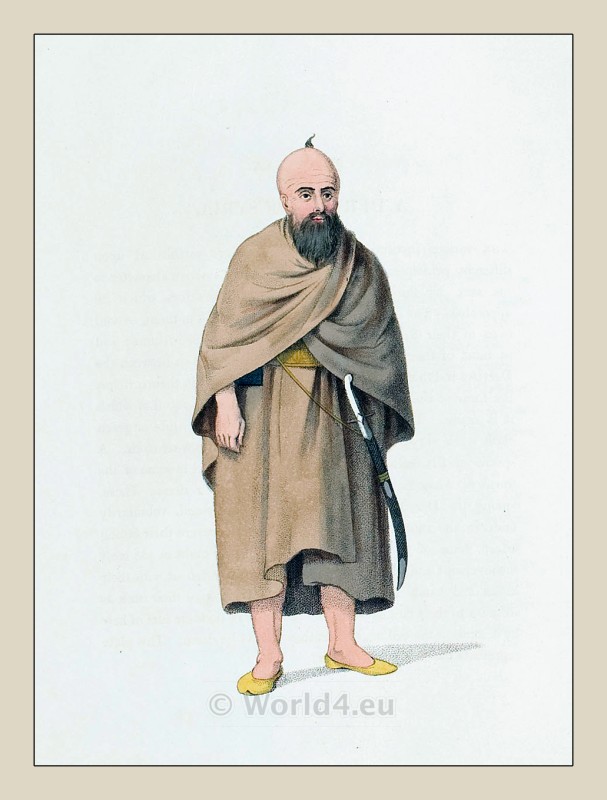
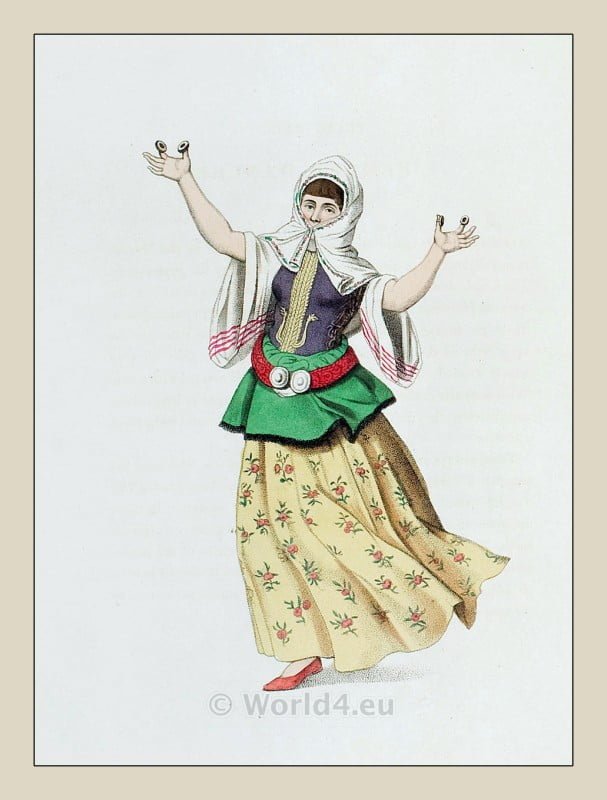

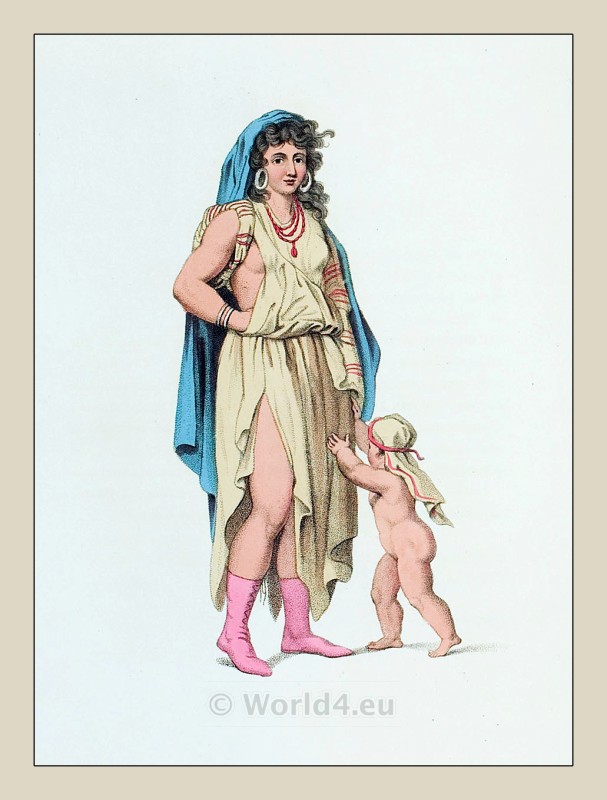
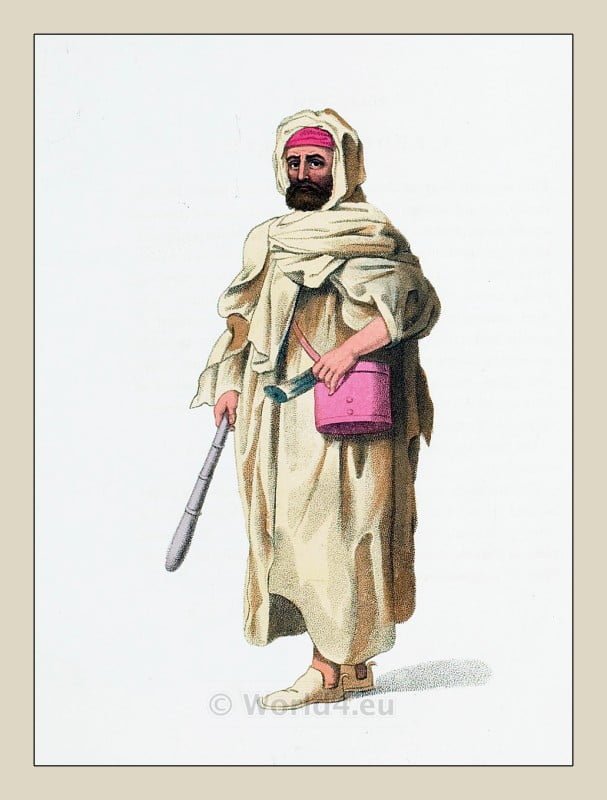
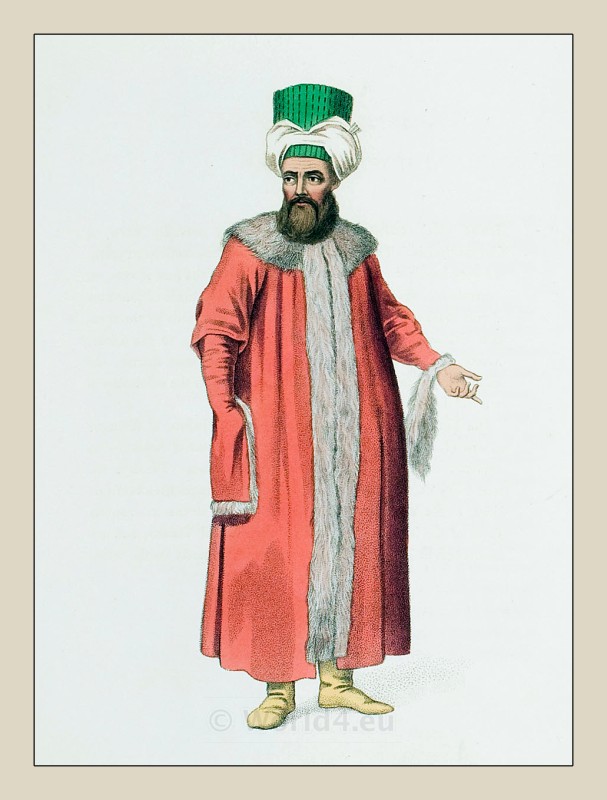
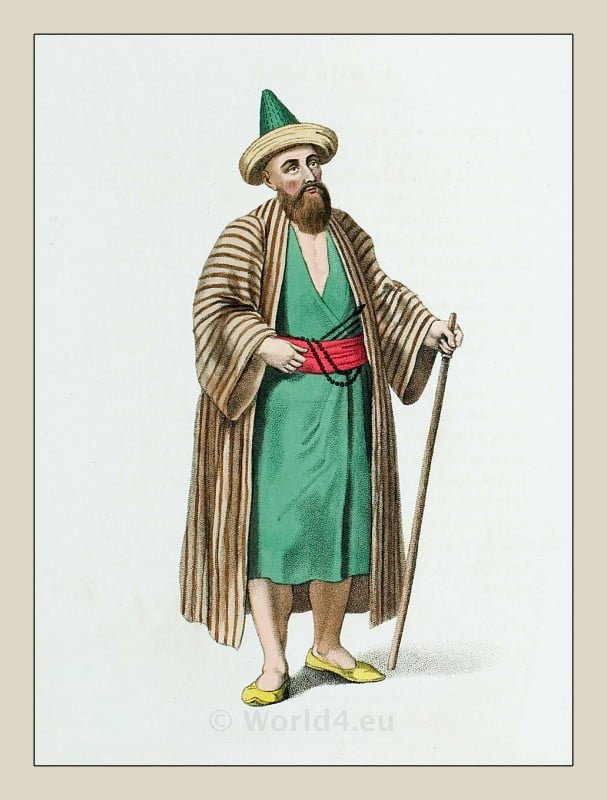
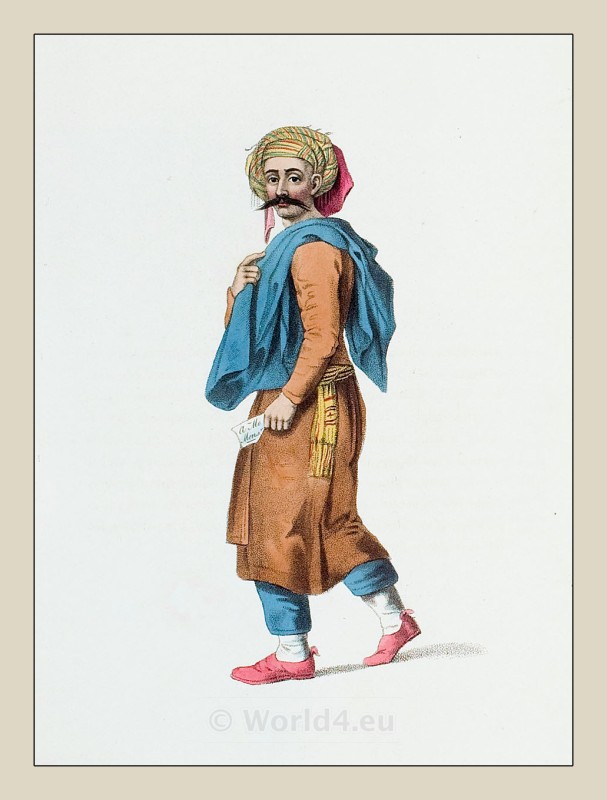
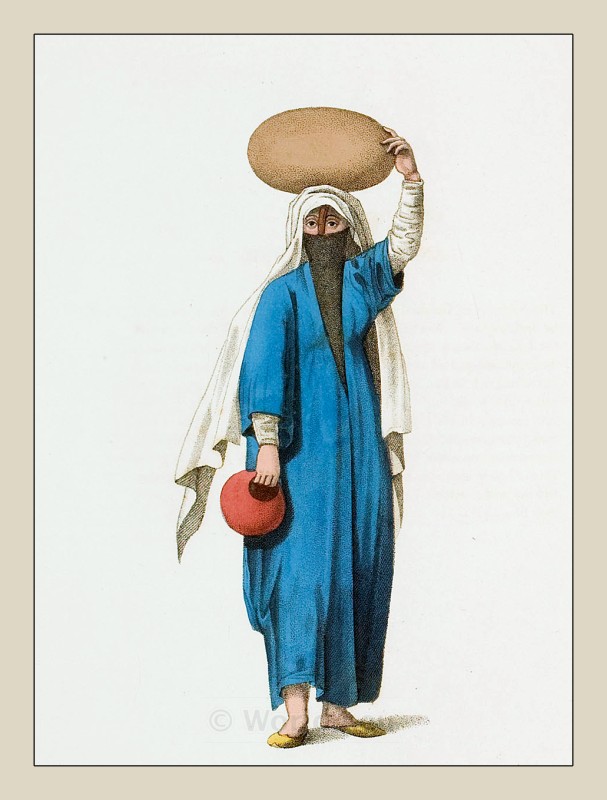
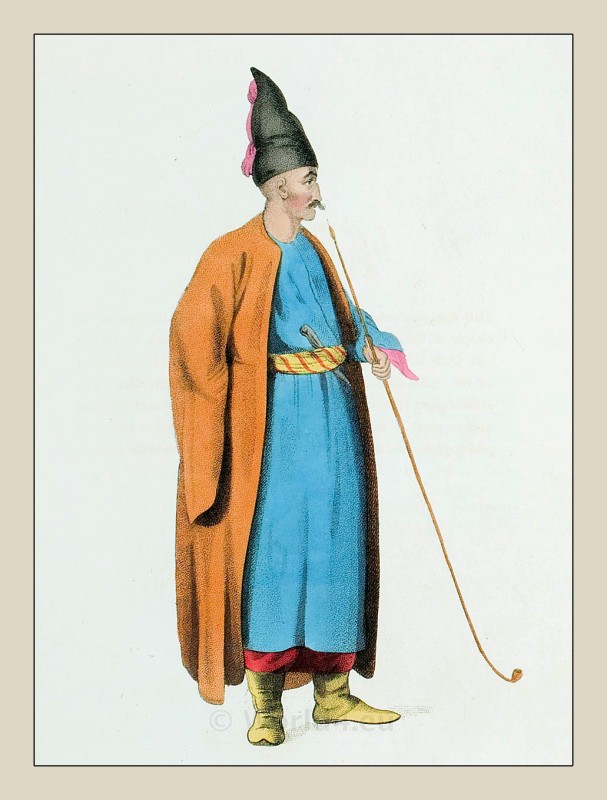


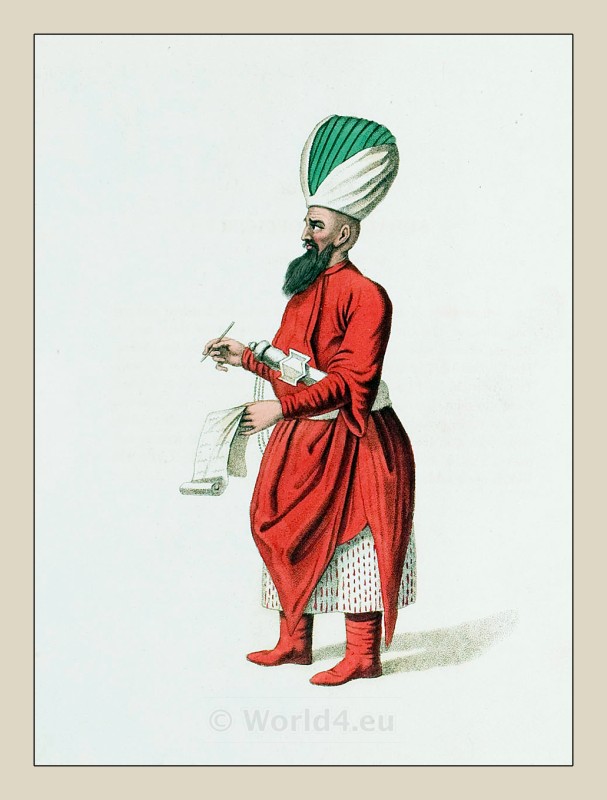

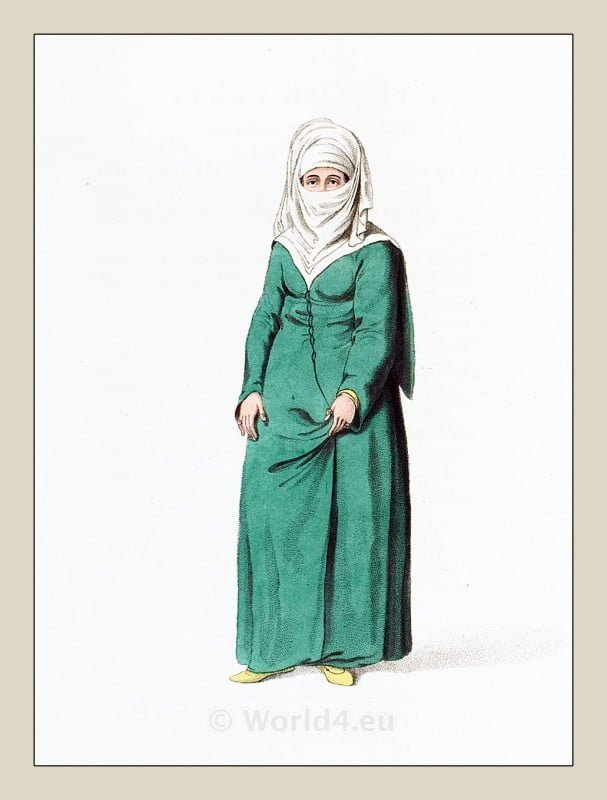
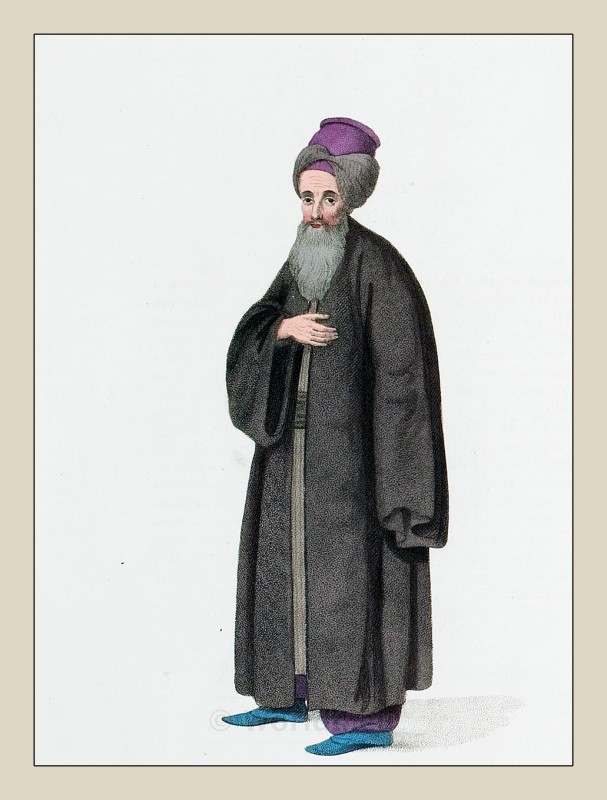
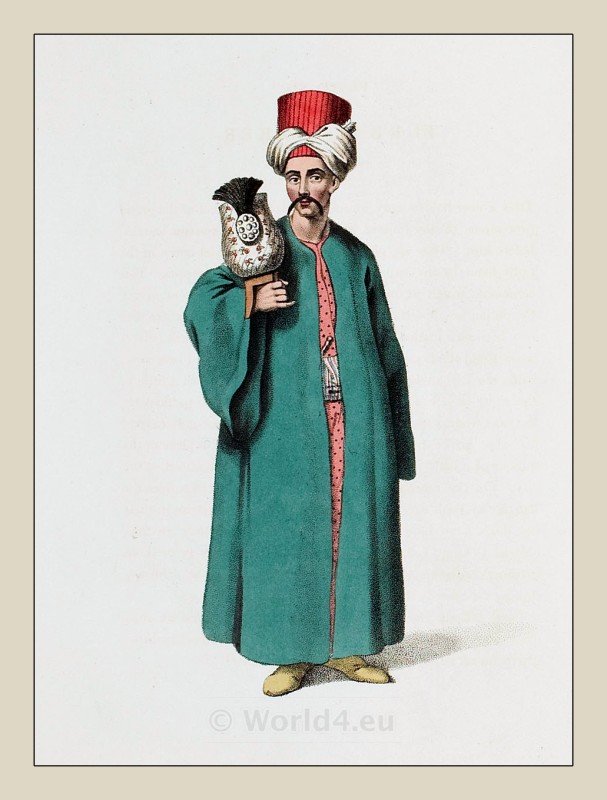
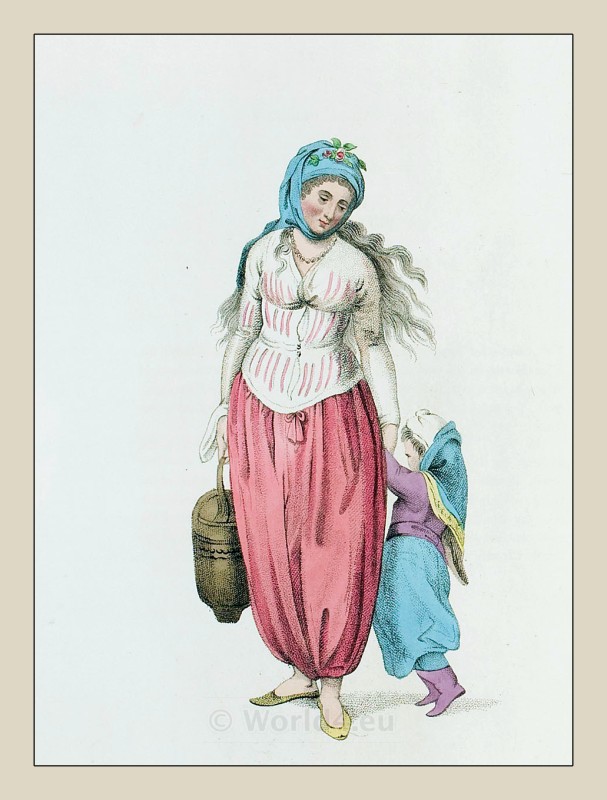
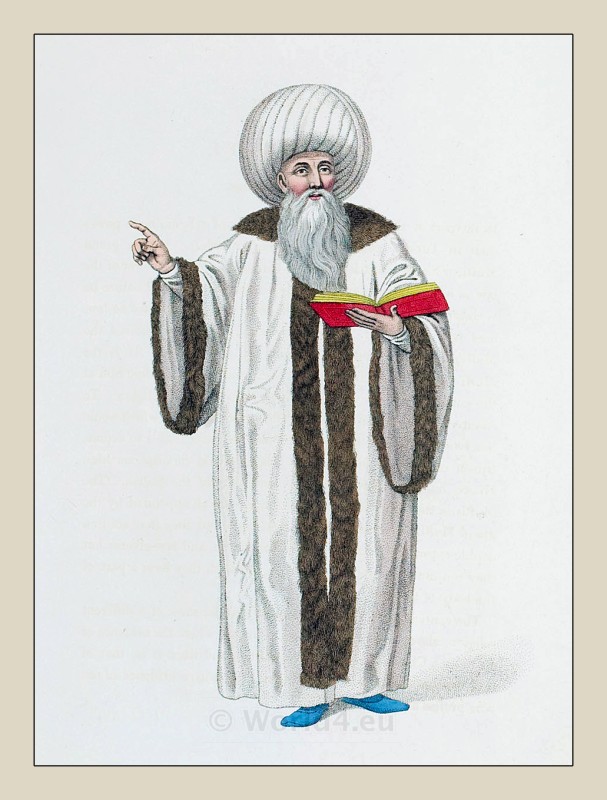
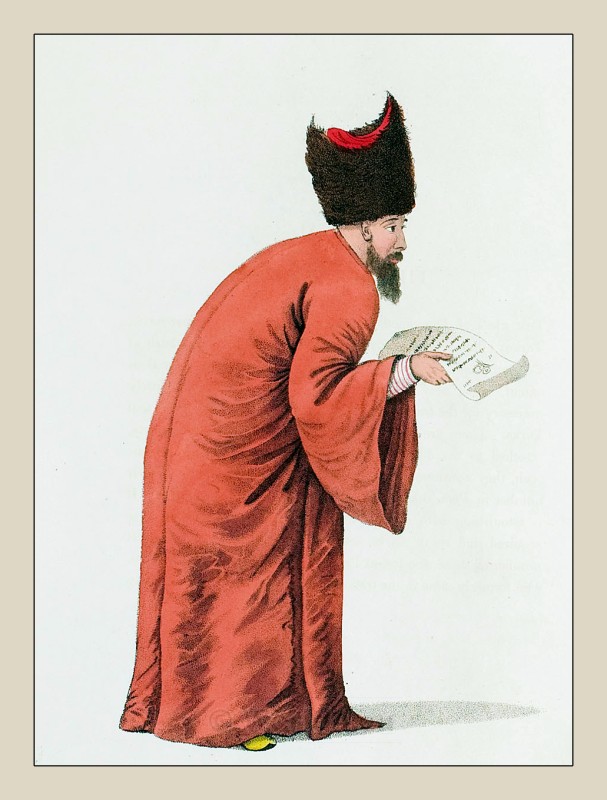
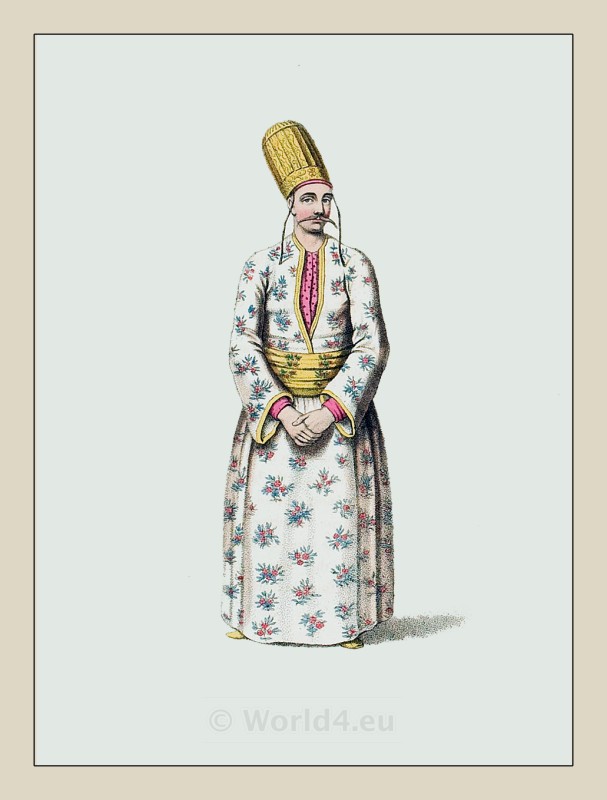
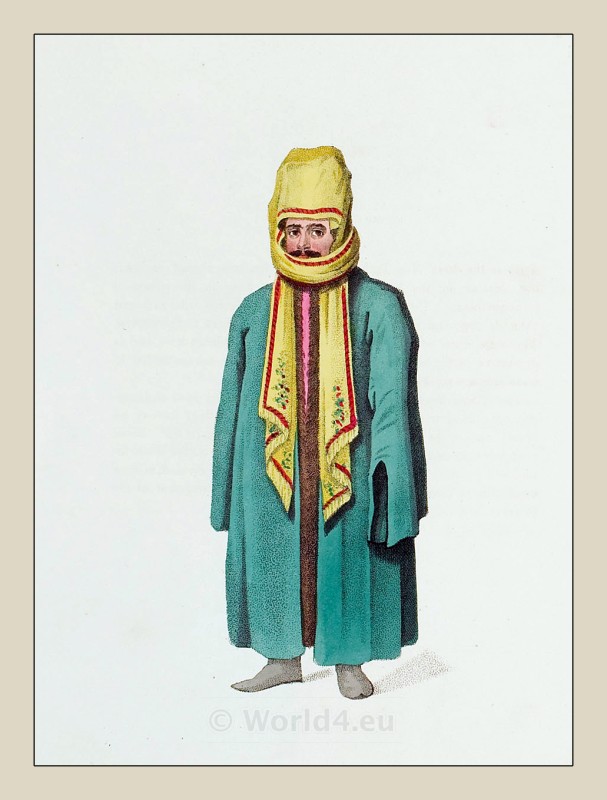
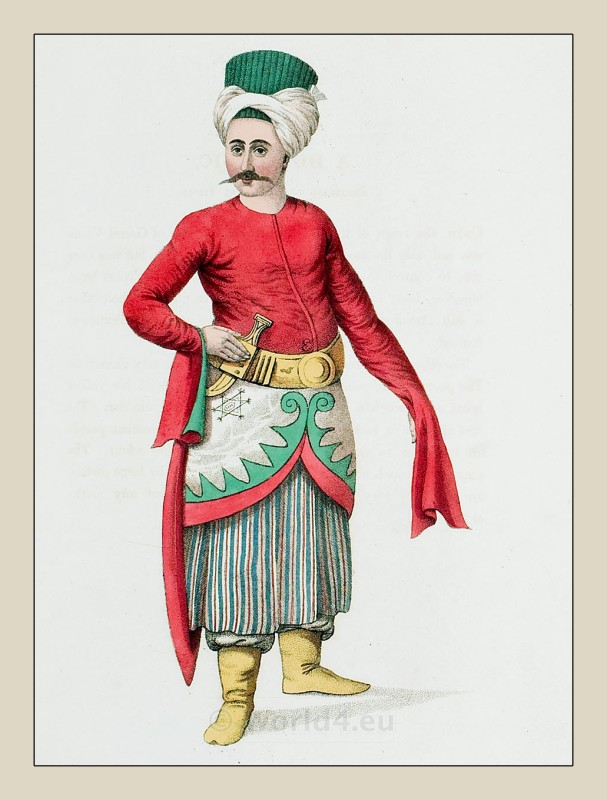
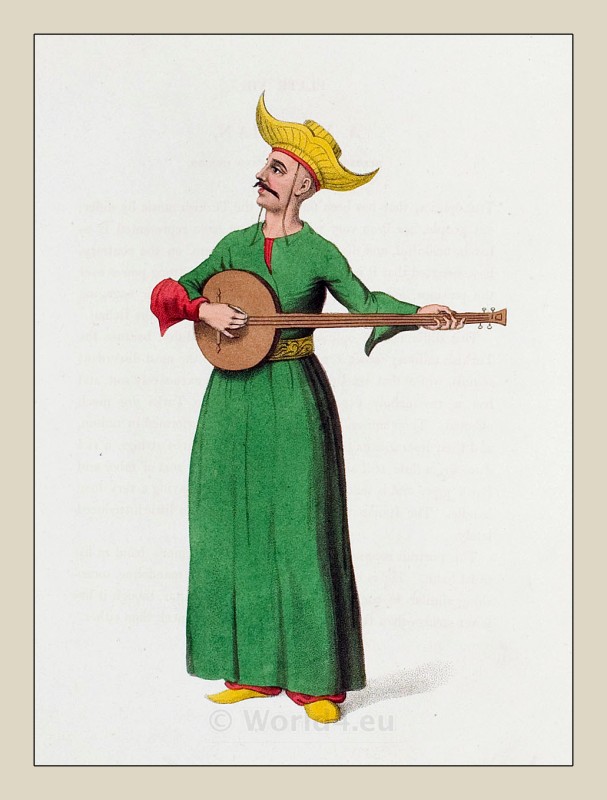
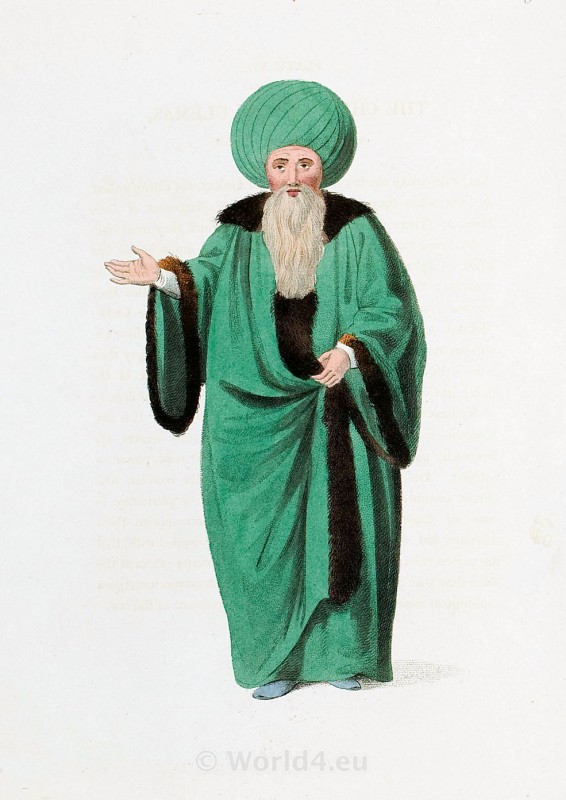
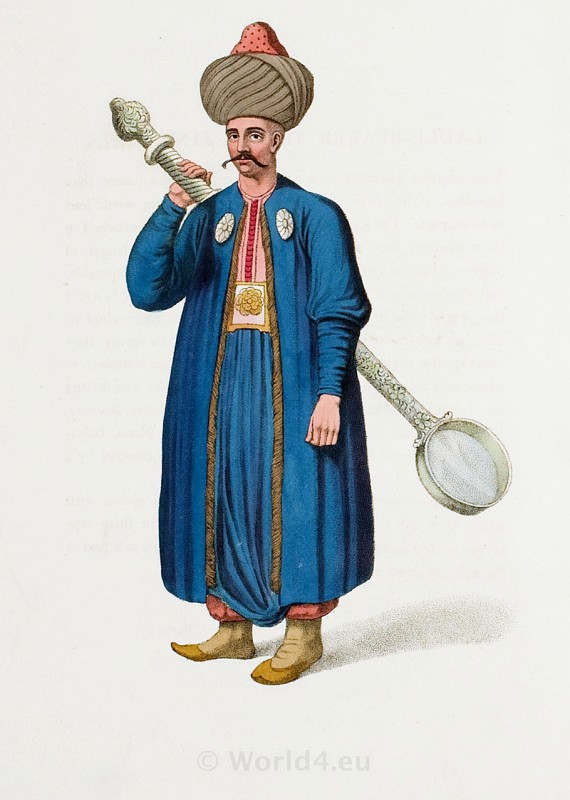

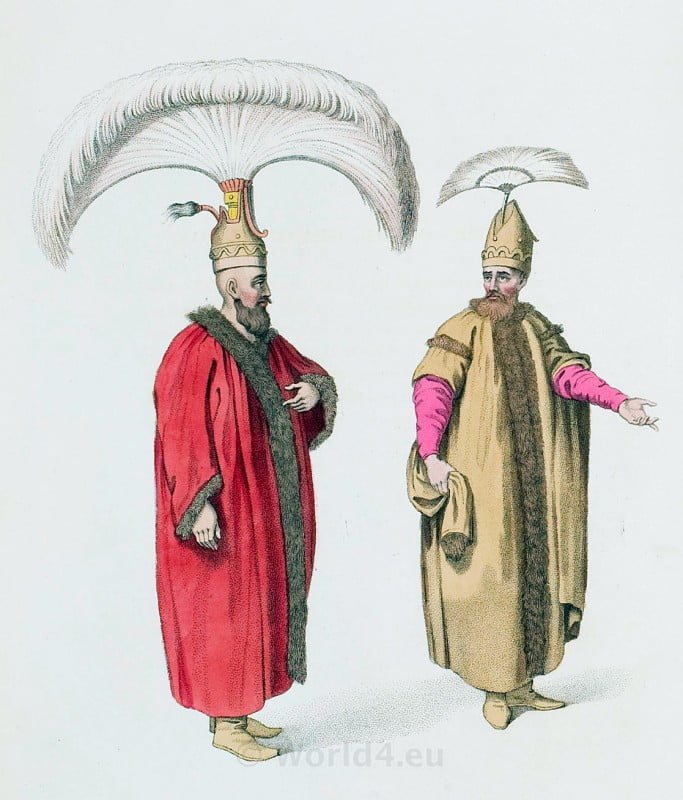
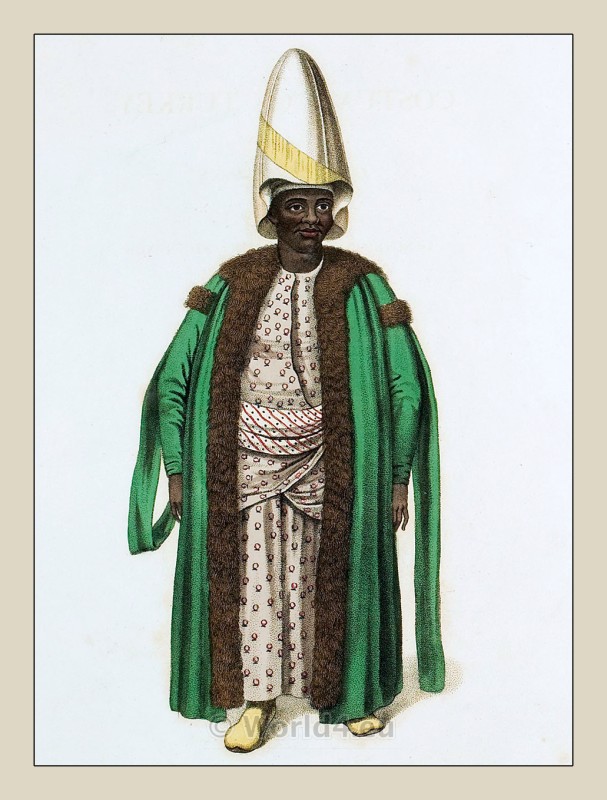
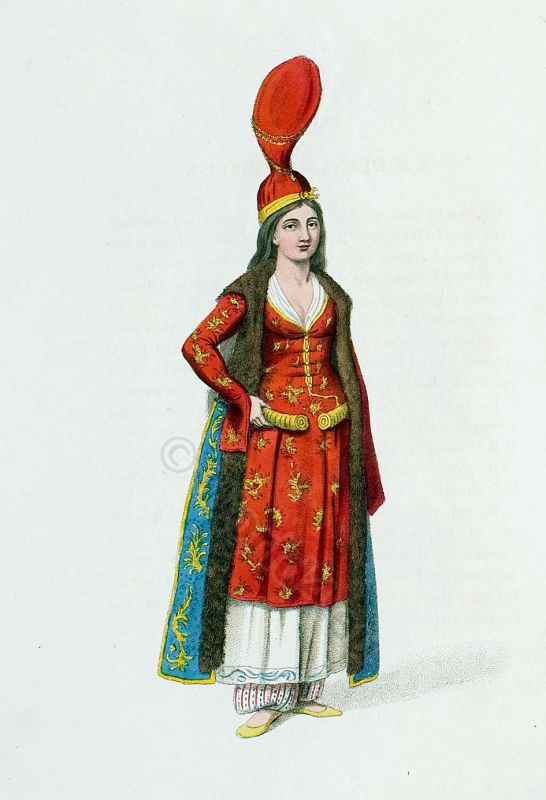
LONDON, APRIL 26, 1802.
The costume of Turkey by Octavian Dalvimart.
Historical Ottoman Empire officials and ethnic groups.
- THE CAPTAIN PASHA. Kaptan Pasha (Ottoman قاپودان پاشا; also Kaptanpaşa / کاپیتان پاشا; Kapudan i Derya / قاپودان دریا Kaptan-i Derya / کاپیتان دریا) was the highest military rank of the Ottoman Navy.
- A TARTAR. Tatar man from Crimea.
- A SULTANA, OR KADDIN of the Imperial Harem. One of the Sultan’s favorite women.
- THE GRAND VIZIER. The Supreme Vizier or Grand Vizier (Wazir-e Azam and Sadr Azam) was in several Muslim countries, the Prime Minister appointed by the rulers and hence the second man in the state, especially in the realms of Seljuk, Ghaznavid, the Ottoman Empire, the Safavid and Mughal Empire.
- BOSTANDJI BACHl. Bostancı başı, official of the Sublime Gate.
- A TURKISH LADY IN HER WEDDING DRESS.
- AN ATTENDANT OF THE HAREM OF THE GRAND SIGNIOR. Attendant responsible for order in the Sultan’s Harem.
- STOOL-BEARER TO THE GRAND SIGNIOR. Stool bearer to the Sultan (in charge of guarding and carrying the Sultan’s riding stool).
- A GREEK SAILOR in the service of the Sultan.
- THE CONFECTIONER TO THE PALACE. Chief confectioner to the Sultan.
- THE CHIEF USHER TO THE GRAND SEIGNIOR.
- AN ICHLOGAN. İçoğlan, servant to the Sultan.
- A TCHOCADAR. Servant to affluent Ottoman house.
- A BOSNIAC. Muslim man of Bosnia.
- A SPAHI. Member of the Ottoman irregular cavalry.
- A MEMBER OF THE DIVAN. Higher-ranking Ottoman administrative official, member of the Divan (high governmental body).
- SWORD-BEARER TO THE GRAND SIGNIOR. Silahdar Aga, sword bearer to the Sultan.
- A MEVLEVI TARIQA DERVISH. Dancing Dervish of the Mevlevi order.
- A TURKISH FEMALE OF PERA. Muslim woman from Beyoglu (Pera), Istanbul.
- AN INFERIOR OFFICER OF THE JANISSARIES. Lower-ranking official of the Janissary corps.
- AN INHABITANT OF TUE ISLE OF SYMI.
- REIS EFFENDI. Higher administrative official of the Ottoman State.
- A TOPCHIS SOLDlER. Ottoman soldier.
- PRIVATE SECRETARY TO THE GRAND SIGNIOR. Secretary to the Sultan.
- A YOUNG PRINCE, HEIR TO THE THRONE.
- TWO JANISSARIES IN THEIR DRESS OF CEREMONY.
- CAPIDJI BACHI. Kapıcıbaşı, head of ceremonies in the Sultan’s palace.
- AN USHER.
- A FEMALE OF THE ISLAND OF NAXOS. Official dress.
- AN ARMENIAN.
- A DERVISH OF SYRIA.
- A FEMALE DANCER AT CONSTANTINOPLE. Muslim woman dancer from Istanbul.
- AN OFFICER OF THE JANISSARIES.
- A FEMALE BEDOUIN. Arab Bedouin woman from Sahara desert, with her child.
- AN EGYPTIAN ARAB. Arab woman from Egypt.
- AN INHABITANT OF THE COAST OF SYRIA.
- A DERVISH.
- A TURK IN A PELISE. Ottoman man in a fur coat.
- A BEDOUIN ARAB.
- AN ALBANIAN (Shqiperia). Albanian man.
- A SAKA, OR TURKISH WATER CARRIER.
- WOMEN OF THE ISLAND OF ANDROS.
- SUBALTERN OFFICER OF THE JANISSARIES.
- A HAMAL OR COMMON PORTER.
- THE MUFTI OR CHIEF OF THE RELIGION. The Mufti of Istanbul.
- A GREEK WOMAN OF THE ISLAND OF MARMORA.
- TURBAN-BEARER to the Grand Signior. Official responsible for the guarding of the Sultan’s turbans.
- A JEW. Jewish man.
- A TURKISH W0MAN AT CONSTANTINOPLE. Muslim woman in costume typical of Istanbul.
- FIRST DRAGOMAN. Page (Messenger of the Sultan).
- A PAGE of the Turkish Sultan. Head of the Dragomans (Interpreters) of the Sublime Gate.
- A TURK IN HIS CHALL, OR SHAWL. Ottoman man in traditional costume.
- A DOMESTIC. BELONGING TO THE GRAND VIZIER. Servant to the Grand Vizier.
- A MUSICIAN of the Sultan’s court.
- THE KISLAR AGA. Sudanese eunuch of the Harem.
- Capidji Bachi. Officers of the Sultan’s guard in official attire.
- A TURKISH WOMAN IN A PROVINCIAL DRESS. Muslim woman in everyday dress.
- LADLE-BEARER TO THE JANISSARIES. Cook of the Janissary corps.
- THE CHIEF OF THE ULEMAS. The Head of the Ulemas (scholars of Islamic Law and other disciplines).
- A SULTANA, OR ODALISK. Odalisque of the Sultan’s Harem.
PREFACE. (Original introduction in 1804)
NOTHNG, says the Chevalier D’Ohsson in his valuable inquiry concerning the Ottoman Empire ought to be considered as more interesting than an acquaintance with different nations. Their religion, their history, their manners, and their customs, are worthy of the attention of every one. The more considerable a nation is in itself, the more connections it has with others, the more important its political situation, the more it deserves to be known, both by its neighbours, and those countries connected with its government or commerce.
We admire, and with reason, the rapid progress which that part of Europe, over which Christianity has spread her benign influence, has made in every department of science. It has thrown a ray of light over the most distant periods of antiquity, dissipated the clouds which obscured the origin of ancient nations, investigated the concerns of those which have risen from their ashes, while the spirit of inquiry has hitherto scarcely reached a nation, which sprang up on the borders of the Caspian Sea in the thirteenth century, and has, for near four hundred years, acquired the possession of, and still reigns over, the most beautiful part of Europe, while its forces have often thrown terror into the most powerful of its neighbours.
We know, even in this enlightened age, hardly more of the Ottoman Empire than its vast extent and local situation. The illusions and errors, which have resulted from faint, distant, superficial, and slight inquiries, have, with respect to some authors, afforded us only phantoms, which, being looked and acted upon as realities, have been thrust forward as the religion, laws, and manners of the Turks.
It is, indeed, as Monsieur D’Ohsson justly observes, very difficult to penetrate the thick clouds, which surround this uncommunicative nation. The prejudices of religion have raised a barrier, which has been still farther strengthened by physical, moral, and political causes.
The present work, then, has at least the merit of being both interesting and valuable as to its objects; and these objects are, to delineate with fidelity tile various modes of dress and peculiarity of customs now existing among this singular nation, and its various dependencies; and to accompany such portraits with appropriate and accurate descriptions. With respect to the latter division, much is not to be expected from the very narrow limits, to which it was necessary to confine the descriptive part of this work. But it was impossible to enter more in detail upon the subject, without writing almost a volume instead of a page.
The merits of this work depend upon the accuracy and beauty of the Drawings, and the truth of the colouring; and for other inquiries, we must have recourse to the laborious and curious researches of D’Ohsson, D’Herbelot, Dallaway, Oliver, Tott, Montague, Tournefort, and various other writers. From these sources, indeed, added to the manuscript notices of Monsieur Dalvimart, the present descriptions have been drawn up; nor has that admirable work, the Arabian Nights, been neglected, at least where any circumstance mentioned in it has been confirmed by the testimony of other writers. We may, indeed, depend upon any description we meet with in that singularly interesting work, relative to Oriental nations. They all carry with them the genuine stamp of originality, and are rendered authentic by the concurrent testimony of other authors.
There is another reason, too, if it may be allowed to look forward with something like a prophetic eye into the womb of time, that will perhaps give an additional value to this work.
As a nation, the Turks seem drawing near to their dissolution. The power, and, it may be, the ambition and wants of the surrounding kingdoms, is not small; they look with an eager and longing eye towards that most beautiful part of the world; and the half-drawn sword appears ready to strike at the Ottoman crescent, which, meteor-like, sparkles with a dazzling lustre, and seems equally evanescent; at least when comparative weakness is opposed to comparative power.
The Drawings, from which these plates have been engraved, were made on the spot, about four years ago, by Monsieur Dalvimart, and may be depended upon for their correctness. They have been most accurately attended to in the progress of the engraving; and each impression has been carefully coloured according to the original Drawing, that the fidelity of them might not be impaired.
Respecting the orthography of the peculiar names of the Turks, no one standard has been adhered to, because no one standard exists; each writer spelling the names as his ear may have caught the sounds. Thus the different companies, or divisions, of the Janissaries are called Odahs, and Ortas; and it is the same respecting other names.
The Publisher has only to add, that he has endeavoured to make this work superior in point of elegance to his other publications of this nature; and has only to hope for a patronage equal to that he has hitherto been honoured with.
The costume of Turkey by Octavian Dalvimart.
Related
- The people and scenery of Turkey.
- David Roberts. The Holy Land, Syria, Idumea, Arabia, Egypt, & Nubia.
- Costumes and scenery of Afghanistan.
- India. The Mughal Empire.
- The Oriental Album by Prisse d’Avennes. In The Valley Of The Nile.
- Gardens of the Dal Lake at Srinagar in Kashmir.
- Asia costumes by Auguste Wahlen. Based on authentic documents.
- Historical Asian Costumes of Java, Japan and Indonesia.
- The varied and picturesque costumes worn by Natives of India.
- Views of Darjeeling: With typical native portraits and groups.
- Romanian Folk Costumes. Hairstyle and Headdresses.



